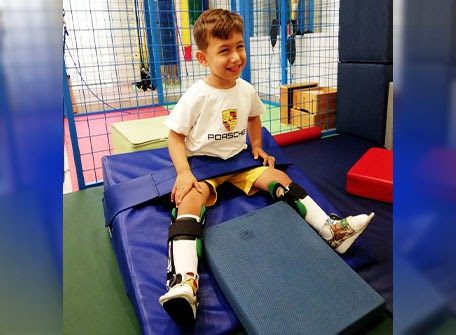“ Today I will explain one of the ways used for Spasticity control; which is Botulinum toxin which is commercially known as Botox.
First, what is spasticity? A muscle of a typical individual has a normal amount of tone or tension that gives stability but allows controlled smooth movement. This typical amount of tension is controlled by the brain.
When an insult occurs to the brain as in the case of having cerebral palsy, the brain control becomes altered resulting in some cases in increased tone/tension in the muscle. Increased tone in a muscle or a group of muscles limits movement and reduces control over this body segment.
Botulinum toxin is one tool that helps reduce this tone when injected locally in a selected muscle/s.
What does this toxin do? It decreases the chemical transmission in the nerves that supply the injected muscle resulting in reduction in tone.
This is a temporary effect that lasts for about 3 months.
How would this help? The resistance that the child faces during movement of the target muscle will be reduced, thus, training for control and/or strength of this muscle will be easier.
What happens after injection? Here comes the role of the rehabilitation team. The Botox will offer the team a window to intervene through to provide the child with specific training so that he /she retain the gained control after the effect of Botox fades away. Training during the activity of the injection is essential to achieve long lasting results.
Who is supposed to decide or help during this process? A multidisciplinary team including rehabilitation specialists like physiotherapist, occupational therapist and orthotist, the neurologist/neurosurgeon/orthopedic surgeon, and the pediatrician. All these specialists will help throughout the process starting from suggesting the injection, screening for eligibility, the injection and the following rehabilitation.
As a conclusion, Botulinum toxin is a precious tool if utilized correctly, especially that the child has a limited number of injections as the body will develop resistance to the toxin with repetition. Refer to the medical/rehabilitation team for professional help. We are happy to answer your queries any time.”
Mohamed Adel
Pediatric Physiotherapist
Seating Clinic Lead


